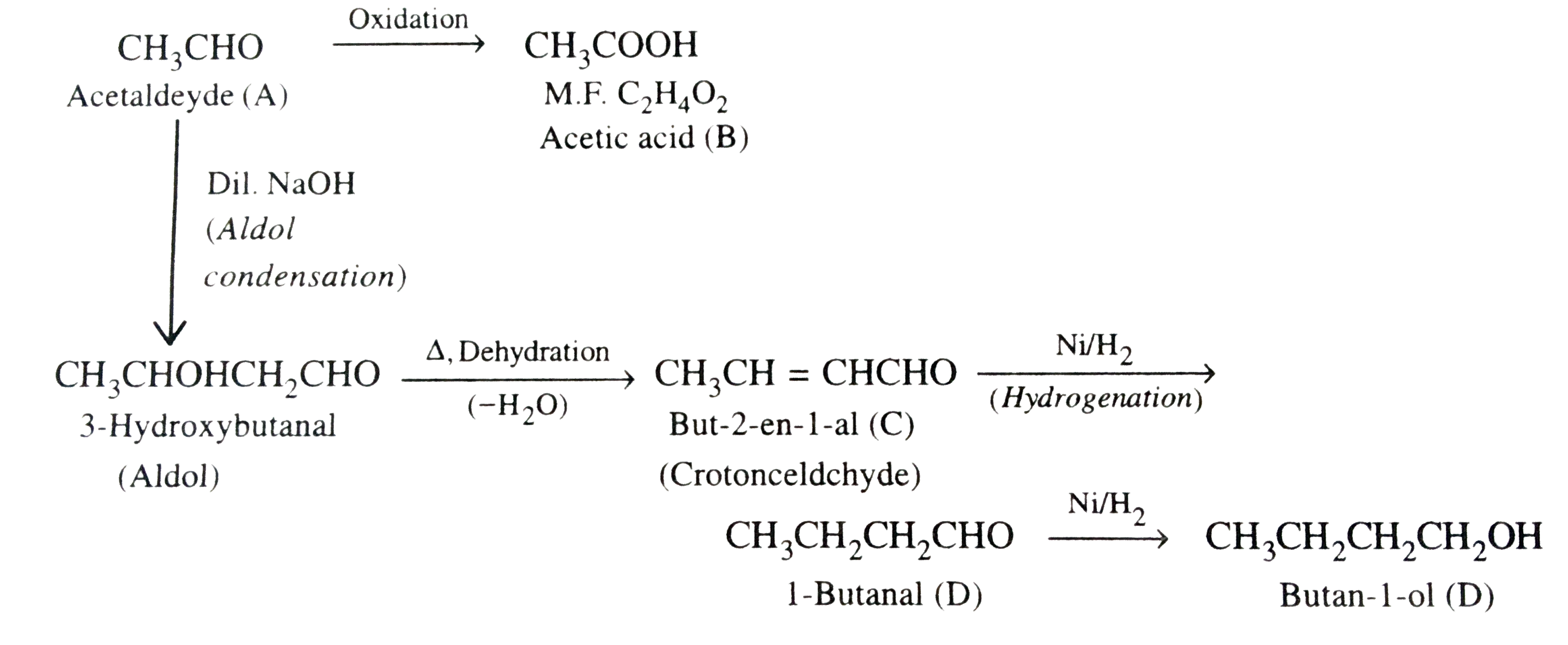InterviewSolution
Saved Bookmarks
| 1. |
A compound A on oxidation gives B(C_(2)H_(4)O_(2)). A reacts with dil. NaOH and on subsequent heating forms C. C on catalytic hydrogenation gives D. Identify A,B,C,D and write down the reactions involved. |
|
Answer» Solution :(i) Since compound A on oxidation gives compound B with M.F. `C_(2)H_(4)O_(2)`, therefore, compound B may be acetic acid, `CH_(3)COOH and A` and may be acetaldehyde, `CH_(3)CHO`. (ii) Since compound A, i.e., acetaldehyde reacts with dil. NaOH, therefore, it undergoes aldol condensation to AFFORD an aldol. further since this aldol on heating gives compound (C), therefore, (C) must be an `alpha,beta-`unsaturated ALDEHYDE, i.e., but-2-en-1-al (crotonaldehyde). (iii) Since compound (C) on catalytic hydrogenation gives compound D., therefore, D may be either 1-butanal or 1-butanol depending upon the extent of hydrogenation. All the REACTIONS INVOLVED in this question are explained below: 
|
|